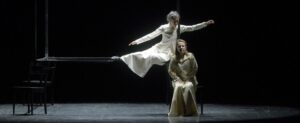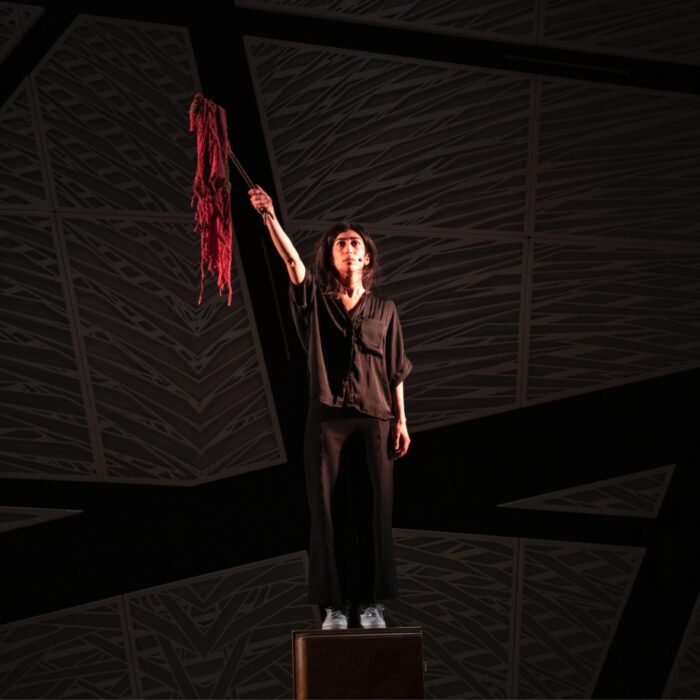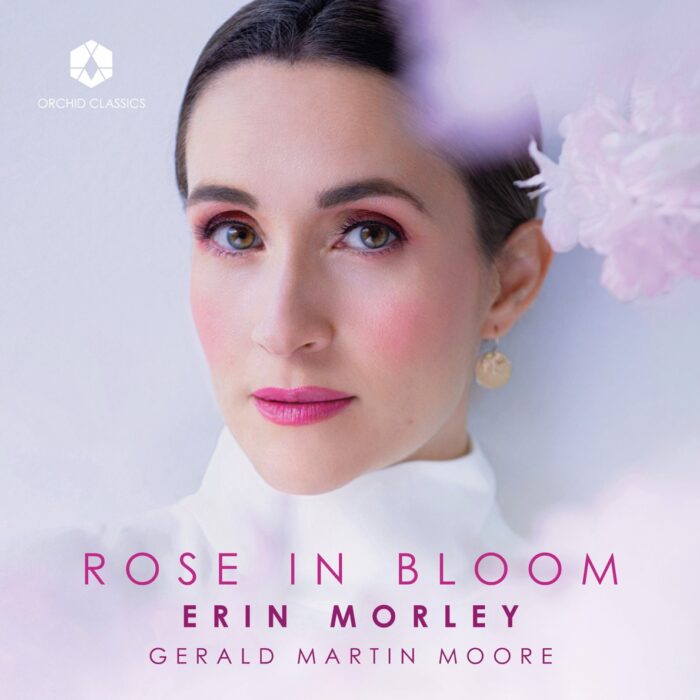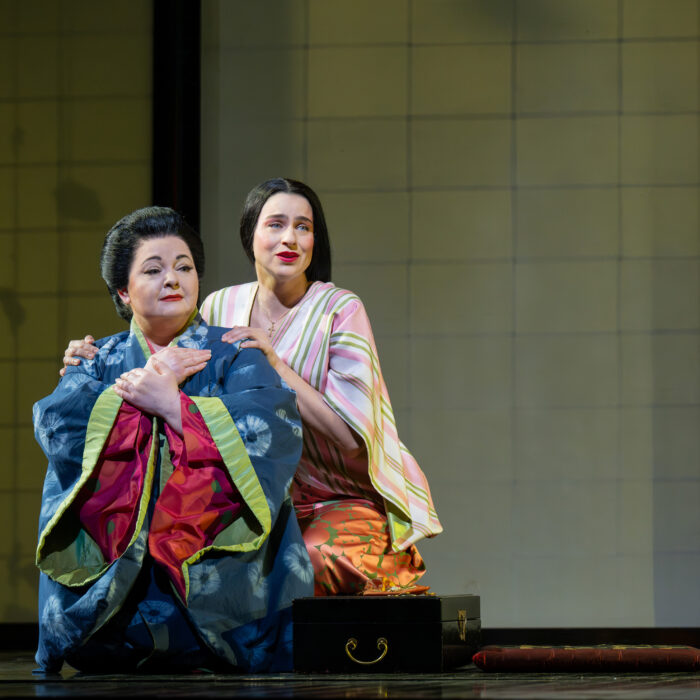
Teatro La Fenice 2022-23 Review: Il Trionfo del Tempo e del Disinganno
Marcon’s Musical Direction Saves Händel’s Oratorio From A Dramatically Unconvincing Staging
By Alan NeilsonPhoto: Michele Crosera
In 1707, Händel arrived in Rome and soon made the acquaintance of important members of the papacy, including Cardinal Benedetto Pamphilj, from whom he received his first major libretto, “Il Trionfo del Tempo e del Disinganno.” Because public performances of operas in Rome had been forbidden by papal ban in 1703, Handel made this an oratorio. Although little is known of its initial reception, it is clear that Handel was pleased with the quality of the score. He reused much of the material in his opera seria which he subsequently composed, including the famous aria “Lascia la spina,” which was to reappear in his 1711 opera, “Rinaldo,” as “Lascia ch’io piangia.” It was also a work that he thought sufficiently high of to revisit on two further occasions. In 1737, he revised the work into three sections and changed its name to “Il Trionfo del Tempo e del Verità.” Then in 1757, he created a new English version entitled “The Triumph of Time and Truth.”
Presentations of “Il Trionfo del Tempo e del Disinganno” are by no means rare, nor is it unusual for them to be given as a staged presentation, often successfully so. However, it is a work that must be treated carefully. The music has plenty of emotional tension with contrasting moods and the characters are substantial, but the relationships between them are relatively static. Also, it is more of a conversational piece in which Bellezza (Beauty) is encouraged by Piacere (Pleasure) to follow a life of thoughtless diversion. While Tempo (Time) and Disinganno (Enlightenment) warn her to abandon such a path as being frivolous. Far better to pursue a path that rejects pleasure in favor of truth and thereby gain a place in heaven. This is a work with a message that reflects and promotes the librettist’s own religious philosophy, in which he appears to reject the idea of virtuous pleasure.
Teshigawara’s Imaginative Choreography Fails To Enhance the Drama
The challenge for any stage director, with this oratorio, is overcoming the fact that there is almost no physical action. For its production of “Il Trionfo del Tempo e del Disinganno,” the Teatro La Fenice, assigned the Japanese director Saburo Teshigawara to oversee the staging, costumes and choreography. Whilst clearly understanding the work had little to offer in the way of drama, he nevertheless appeared to simply sidestep the challenge. He opted for a presentation based around dance, with himself as one of the lead dancers. The singers were required to do very little, apart from sing. They rarely engaged directly with each other. Instead, they spent much of their time in their own physical space, delineated by the frame of their own personal cube, which they stepped into and out of as they moved it around the stage. They never physically touched one another. Often, they simply stood, looking directly at the audience, while they sang.
Meanwhile, the dancers wove their way around the stage, moving in between the singers. The dancing was neatly developed and was, as a whole, pleasing to watch. But it rarely, if at all, had anything directly to add to Bellezza’s dilemma of whether or not to succumb to Piacere’s tempting or to follow the advice offered by Tempo and Disinganno. Moreover, the pleasing effect of the dance waned over the course of the evening. It never moved beyond the visually attractive and started to become somewhat tedious as its detachment from the narrative became ever more clear.
Nor did other aspects of Teshigawara’s staging help the situation. The scenery consisted of no more than the frames of the cubes, which were not always present, set against a black backdrop. Everything was dark and gloomy. The costume designs were outside of a specific time period or tradition and colored either black or white, but they were pleasing on the eye. The lighting, also designed by Teshigawara, did little to relieve the staging’s overwhelming darkness. The focused bright light often gave rise to shadows that covered the faces of the singers, but this did not help.
All in all, it was a staging that did not add anything to the narrative, nor did it bring the drama to life. Instead, it managed to magnify the static nature of the piece. The one exception being the final scene in which Bellezza rejects Piacere and accepts the pathway that leads to heaven. This is the only time in the presentation where a dancer is used to provide a meaningful setting, as she lies next to Bellezza and comforts her as she laments her previous behavior and embarks on her new course. It was a delicately and sensitively handled scene that successfully melded the music with the staging to heighten the affect and offer an alternative approach to the dancing, which never convincingly connected with the narrative, despite its sometimes pleasing quality.
Solid Performances From The Cast
The musical side of the production, however, was far more successful. The principal roles were, if not outstanding, certainly well paired, with each of the four singers producing solid performances.
Mezzo-soprano Giuseppina Bridelli, in the role of Piacere, produced a pleasing performance, albeit not up to her usual high standards. Her singing did not always possess the ease and agility that characterizes her performances. Normally, one can expect plenty of vocal movement, ornate embellishments, and an impressive coloratura with a high degree of expressivity. But, she appeared somewhat ill-at-ease, even a little reserved. Her aria “Lascia la spina,” for example, was technically well-delivered but was unable to match the gentle sensitivity of the orchestra. On the other hand, the aria “Come nembo” was expertly dispatched. She tore into the aria, unleashing her anger in energetically crafted lines, full of emotion, and topped by an ornate and explosive coloratura. Also, recitatives were skillfully moulded, using an array of colors and neatly placed accents, to bring out the meaning.
Silvia Frigato has an appealing, bright soprano with a homogeneous quality, only altered by the occasional addition of lightly colored inflections. Her voice is versatile, secure and has a clear resonance that she used confidently to spin out complex lines and indulge in pleasing, if not spectacular, coloratura displays. As Bellezza, she appeared to focus on expressing the emotions rather than aiming solely at vocal beauty. The aria “Un pensiero nemico di pace,” in which she reflects on the nature of time, nicely exemplified her ability to voice her passions as she unleashed an emotional tirade against the falsity of time and against the background of the rhythmically strong racing orchestral accompaniment. With six arias to sing, however, her largely monochromatic singing did dent the overall impact of her performance, notwithstanding the pleasing quality of individual arias, not least “Tu del Ciel ministro eletto,” which brings the operas to a close. In this, she delivered a sensitively exquisite reading of untarnished beauty.
The tenor Krystian Adam made for an angry and assertive Tempo who was not prepared to give way to Bellezza’s delusions or to Piacere’s temptations. In his aria, “Folle, dunque tu sola presumi,” he gave voice to his feelings with a powerful rendition in which he not only forcefully made his views clear but also took the opportunity to show off his finely crafted coloratura and his ability to embellish the vocal line with emotional accents and dynamic contrasts to heighten expressivity. Adam also possesses a strong stage presence, which added to his impression.
Contralto Valeria Giradello possesses a voice that has always been characterized by the warm tones and the array of colors she is able to inject into her singing. Since first reviewing her performance as the Messenger in Monteverdi’s “L’Orfeo” in Vicenza back in 2017, she has come a long way. She no longer defines herself as a mezzo-soprano, and her performances have matured. She sings with more freedom, control and confidence, which has brought a greater degree of nuance and depth to her interpretations. This was clearly illustrated by her portrayal of Disinganno. As is usual, she used the colors of her palette to skillfully create pleasing chiaroscuro effects, with flashes of bright colors to illuminate the dark tones that form the vocal backdrop. But, her phrasing was more sensitive and contained carefully positioned accents and dynamic emphasis. Her coloratura displayed more fluency. Only her final aria, “Chi già fu del biondo crine,” was a little weak in that it lacked the necessary conviction to fully convince. Otherwise, it was a fine performance.
Marcon Brings Out The Best From The Orchestra
The real star of “Il Trionfo del Tempo e del Disinganno,” however, was the Orchestra del Teatro La Fenice under the direction of Andrea Marcon, who elicited a sensitive reading that was intimately tied to the emotions of the characters and to the dramatic qualities of the work. He elevated the quality of the passions expressed. The changing rhythms and underlying momentum were beautifully handled. There was no sense of them being forced. Everything moved forward naturally, underpinned by a wonderful energy. Textures were clearly uncovered and the balance between the orchestral parts was near-perfect, while soloists were given due prominence and encouraged to express themselves. It was, in every respect, a first-rate performance!
Overall, it was by no means a convincing presentation. Teshigawara’s direction and staging did not relate easily to the narrative, despite the quality of the dance. It felt contrived and produced a gloomy atmosphere that hung unrelentingly over the stage. The singers produced more than acceptable performances, but did not often rise to higher levels, although they all displayed instances of real quality. The performance was, however, in one area at least, a complete success. The greatest highlight was the quality of the Orchestra del Teatro La Fenice under the direction of Marcon, whose appearance was his first in Venice in over twenty years.



